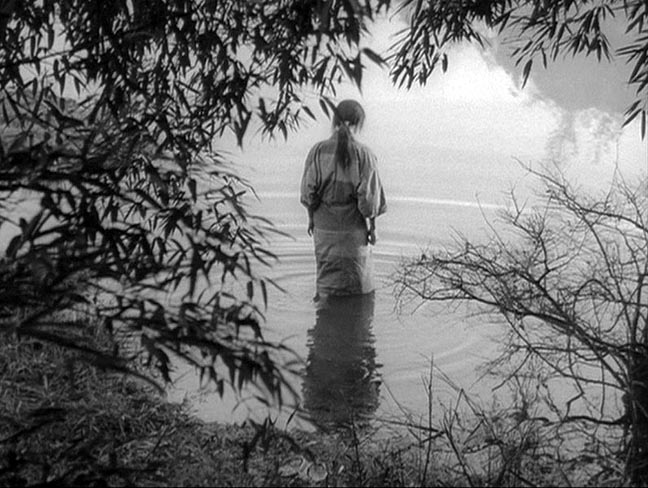
 Kenji Mizoguchi is a director’s director long admired by other filmmakers for his formal mastery over a long career, and is considered, along with Ozu and Kurosawa, to be among the holy trinity of Japanese directors. Yet his name is growing increasingly obscure among average movie fans, in part because of the difficulty of seeing his films. In a career spanning over thirty years, some of the most tumultuous in Japanese or world history, Mizoguchi made over 80 films (by the end of his career, even he wasn’t sure of the exact number) and today less than half of those survive.
Kenji Mizoguchi is a director’s director long admired by other filmmakers for his formal mastery over a long career, and is considered, along with Ozu and Kurosawa, to be among the holy trinity of Japanese directors. Yet his name is growing increasingly obscure among average movie fans, in part because of the difficulty of seeing his films. In a career spanning over thirty years, some of the most tumultuous in Japanese or world history, Mizoguchi made over 80 films (by the end of his career, even he wasn’t sure of the exact number) and today less than half of those survive.
The good news, for New Yorkers anyway, is that this month the Museum of the Moving Image is hosting the first New York retrospective of Mizoguchi in over twenty years. In conjunction with the Japan Foundation and the National Film Center in Tokyo, all of Mizoguchi’s surviving films will be shown on celluloid (most on 35mm, but a few rarities on 16mm).
For cinephiles, this could be a chance to observe a stylistic missing link; Mizoguchi’s influence has been wide-ranging but poorly understood, due to their spotty availability. To show that wide-ranging influence, here is a short selection of filmmakers who owe a debt to Mizoguchi.
Terrence Malick – During Malick’s famous 20 year absence from filmmaking, one of his projects that never came to fruition was a stage version of Sansho the Bailiff (Andrzej Wajda, the Polish director of “Ashes and Diamonds,” was also briefly involved). While this project never was produced, a look at Malick’s more recent films displays his affinity for Mizoguchi’s tendencies and techniques. A passion for the natural world, the view of man’s struggles from a cosmic perspective and some more specific visual and thematic references (some lines from Malick’s Sansho script made it into “The Thin Red Line,”) link the work of Malick and Mizoguchi.
Andrei Tarkovsky – “Such an artist can convey the lines of the poetic design of being. He is capable of going beyond the limitations of coherent logic, and conveying the deep complexity and truth of the impalpable connections and hidden phenomena of life.” If that praise from the man himself isn’t enough to convince you of Tarkovsky’s admiration of Mizoguchi, his films tell the same story. Tarkovsky incorporated Mizoguchi’s long takes and elaborate yet subtle camera movements into his own style and used those techniques to tell very different stories with similar success.
Jean-Luc Godard – This might seem incongruous to some on stylistic grounds; Mizoguchi’s restrained long takes bear little similarity to the exuberant cutting and diegetic ruptures of Godard’s best known work. But Godard championed Mizoguchi both while a filmmaker and while a critic at Cahiers du cinema and the two were drawn to very similar subject matter. Both flirted with Marxism and made films that were political without always appearing to be so and both were drawn to the plight of women on society’s margins, allowing them to speak for the ills of society as a whole. These films include “The Story of the Last Chrysanthemums,” “The Life of Oharu,” and “Street of Shame,” for Mizoguchi and “My Life to Live,” and “Two or Three Things I Know About Her,” for Godard.
The Mizoguchi Retrospective at The Museum of the Moving Image runs through June 8.